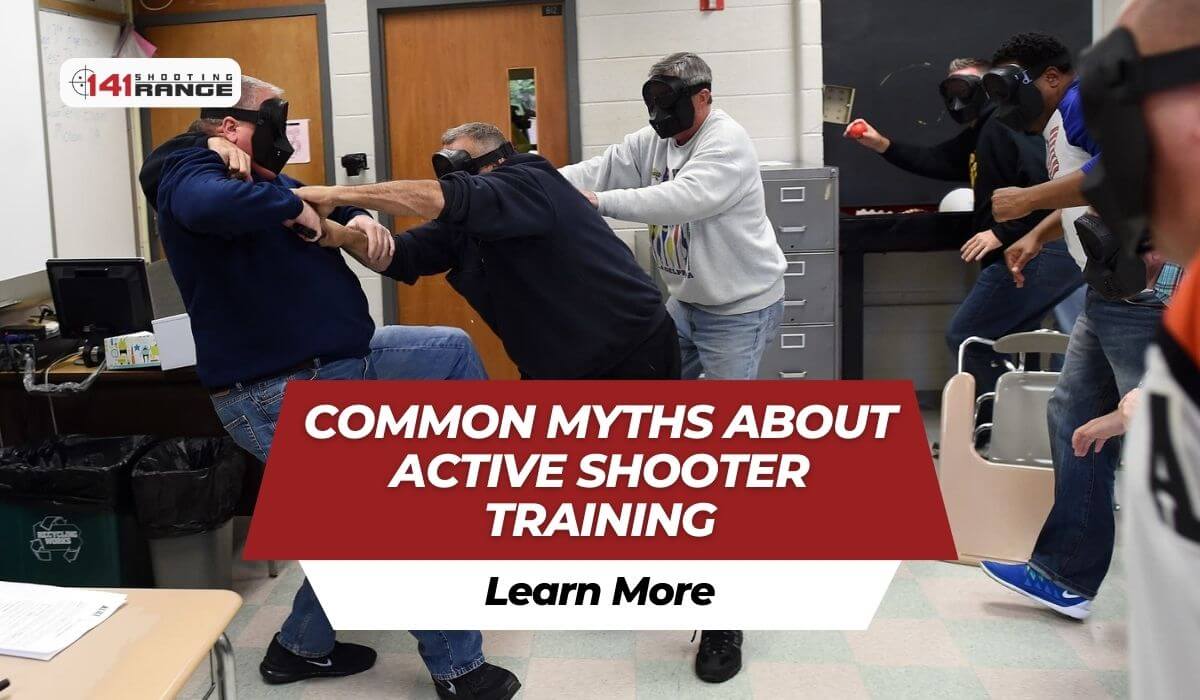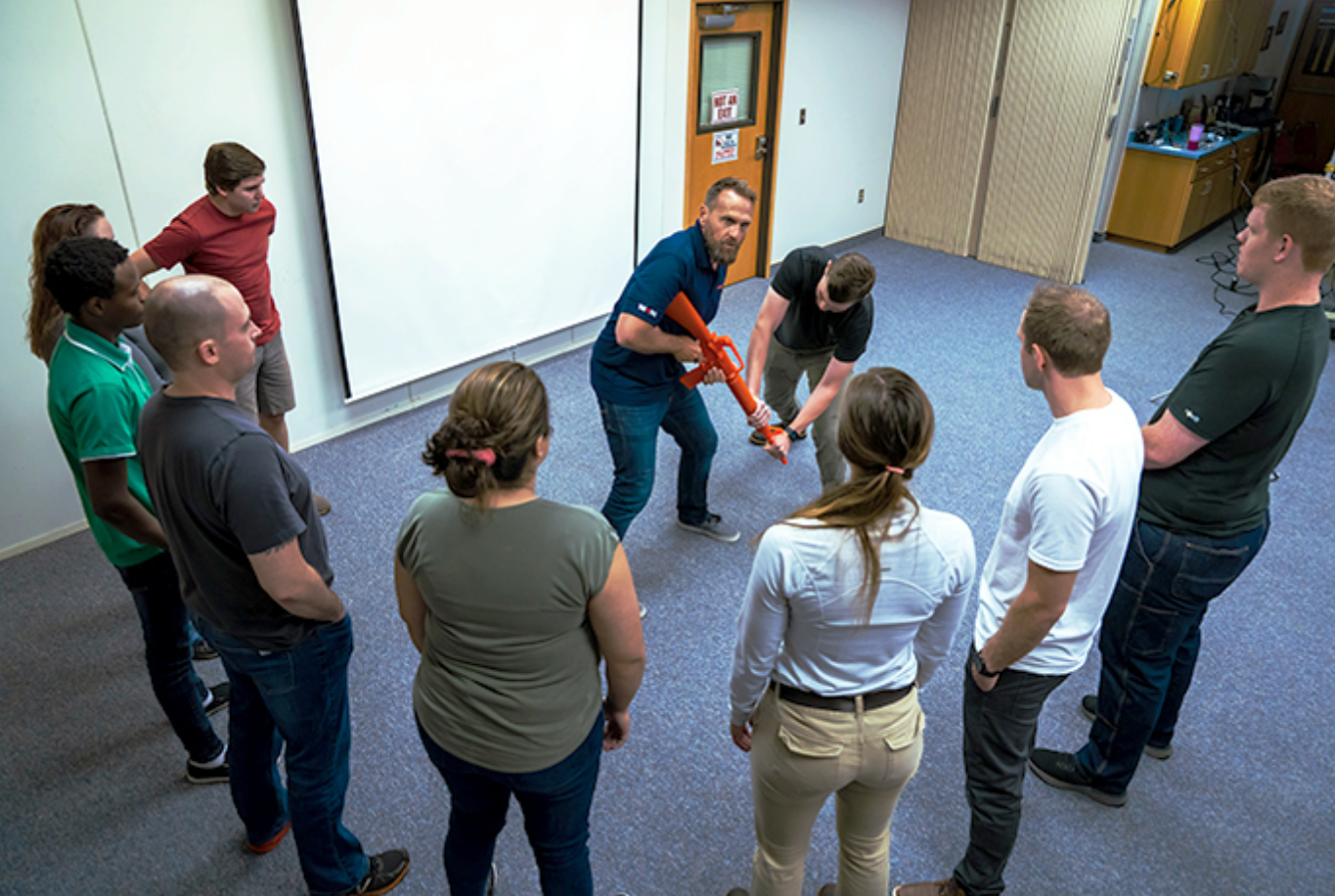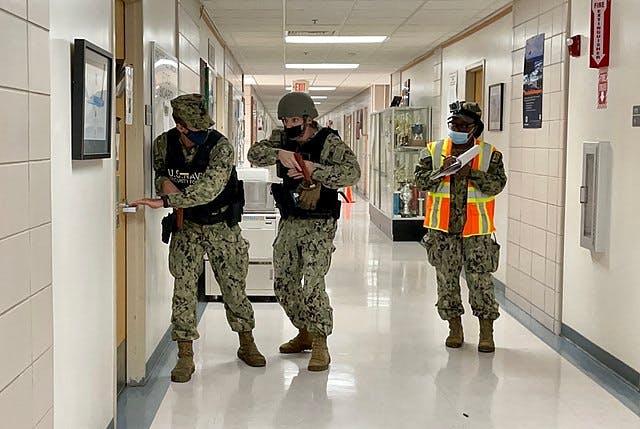Exactly How Active Shooter Training Can Save Lives in Dilemma Situations
Exactly How Active Shooter Training Can Save Lives in Dilemma Situations
Blog Article
Exploring the Secret Components and Goals of Effective Active Shooter Training Programs
Energetic shooter training programs are vital in outfitting individuals and companies with the required abilities to react efficiently to possible risks. These programs incorporate important parts, such as the "Run, Hide, Battle" strategy, sensible circumstance simulations, and communication procedures, cultivating an environment of preparedness. In addition, they emphasize psychological durability to aid individuals navigate high-stress situations. As we discover the ins and outs of these training programs, it comes to be evident that understanding their detailed nature is essential to enhancing precaution and action capacities. What details elements genuinely define their efficiency?
Significance of Active Shooter Training
Energetic shooter training programs are critical for boosting readiness and reaction in the face of potential hazards. These programs intend to furnish individuals, organizations, and areas with the expertise and skills required to effectively reply to energetic shooter circumstances. The increasing regularity and intensity of such events underscore the significance of proactive actions, as prompt and educated responses can significantly minimize damage.

Additionally, these programs can help ease the anxiety and worry that often accompany conversations concerning possible threats. By offering organized guidance and useful methods, people gain confidence in their capability to respond properly. Inevitably, the relevance of active shooter training hinges on its prospective to save lives, minimize injuries, and grow a ready and resistant area efficient in facing unexpected difficulties.
Key Elements of Training Programs
Reliable energetic shooter training programs commonly include a number of crucial elements developed to prepare participants for real-world scenarios. The initial part is detailed education on the nature of active shooter cases, including data, case studies, and emotional variables that influence aggressors. This theoretical structure is vital for promoting awareness and understanding amongst individuals.
Following, programs frequently include training on individual security measures, stressing the "Run, Hide, Fight" approach. Individuals learn just how to assess their setting, make quick decisions, and take proper actions throughout a crisis. In addition, the addition of reliable communication abilities is important, as individuals should recognize how to report cases and share crucial information with police.
An additional vital component is the involvement of regulation enforcement or safety professionals, that provide insights right into tactical reactions and the importance of teamwork throughout a crisis. Moreover, programs should attend to the emotional aftermath of an active shooter scenario, offering methods for coping and healing.
Finally, recurring training and correspondence course are important to ensure that knowledge stays present and individuals really feel confident in their capabilities. With each other, these key components produce an all-around training program that furnishes people to react effectively to an active shooter event.
Realistic Scenario Simulations
Reasonable situation simulations are an essential element of active shooter training programs, giving participants with the opportunity to participate in hands-on practice that mirrors potential real-life circumstances. These simulations boost the training experience by creating an immersive environment where individuals can use academic knowledge in practical settings.
With making use of role-playing, simulated scenarios, and specialized training centers, participants experience the prompt challenges and stressors connected with an active shooter incident. This method of training advertises fast decision-making, team effort, and the application of safety protocols under stress. It enables responders to develop critical abilities such as situational awareness, hazard analysis, and efficient evacuation treatments.
Additionally, sensible simulations help to identify possible weak points in participants' responses, enabling instructors to offer targeted feedback and boost overall readiness. The consolidation of varying situations, including various places and view it now aggressor profiles, further enriches the training experience, making certain that individuals are fully equipped to handle a series of prospective scenarios.
Eventually, these simulations offer not just to instruct however also to construct confidence amongst individuals, promoting a feeling of readiness that is necessary for effective emergency situation response despite an active shooter hazard. active shooter training.
Communication Methods in Training
Clear communication is important in energetic shooter training programs, as it straight influences the efficiency of response efforts during a situation. Training participants should recognize the protocols and procedures that will go to these guys certainly lead their actions if faced with an energetic shooter scenario. Establishing clear lines of communication makes sure that all people involved can relay info without delay and accurately.

Moreover, training programs must emphasize the relevance of active listening. Inevitably, effective interaction strategies are crucial for preparing individuals to react emphatically and cohesively in the face of an active shooter case.
Mental Readiness Techniques
Mental readiness techniques are significantly recognized as necessary components of active shooter training programs. These strategies aim to furnish people with the mental resilience required to react effectively in high-stress circumstances. By cultivating an attitude in harmony with potential dangers, individuals can much better manage worry, anxiousness, and complication during important cases.
Key emotional preparedness methods consist of scenario-based training and stress and anxiety inoculation exercises. Scenario-based training immerses participants in sensible simulations that resemble the chaos of an active shooter event, permitting them to practice decision-making under pressure. This exposure helps develop experience with emergency procedures, improving second-nature reactions.
Stress inoculation involves gradual exposure to stress-inducing situations, permitting individuals to establish coping systems. This can include breathing exercises, visualization techniques, and cognitive restructuring to reframe negative thoughts. By incorporating these strategies, training programs can grow a feeling of confidence and control, which is important in dilemma situations.
Moreover, post-incident psychological support is essential to deal with the emotional aftermath of an energetic shooter occasion. Integrating mental health sources right into training programs not only prepares individuals for prompt feedbacks yet likewise promotes lasting emotional well-being, inevitably adding browse this site to a safer and much more resilient environment.
Verdict

Report this page